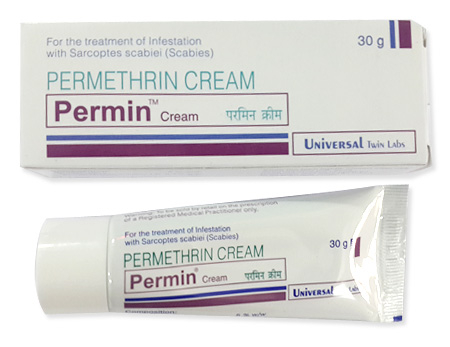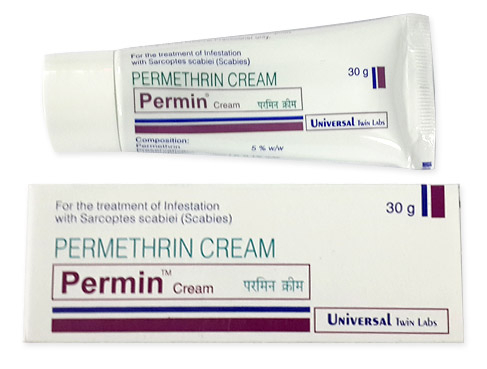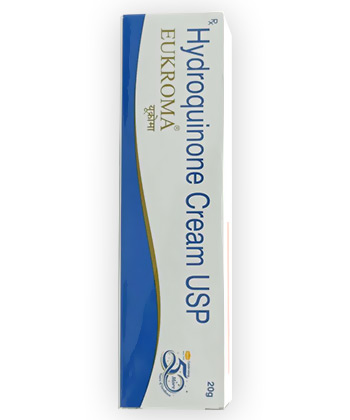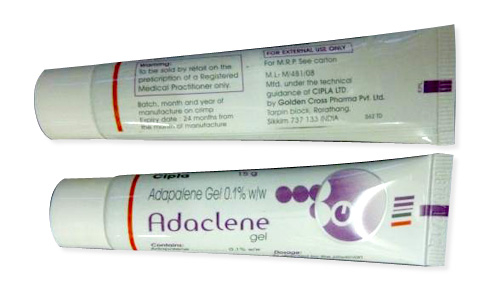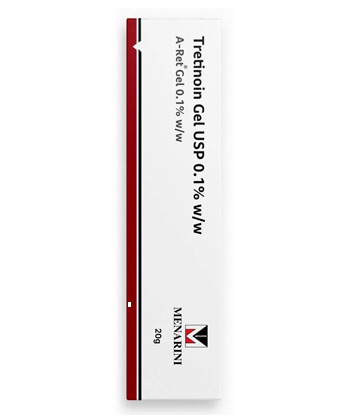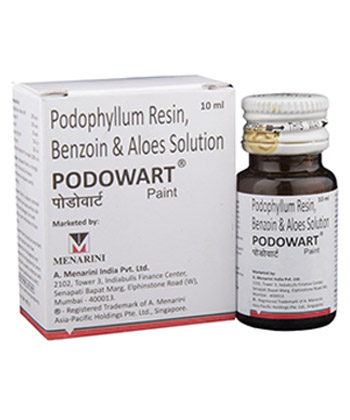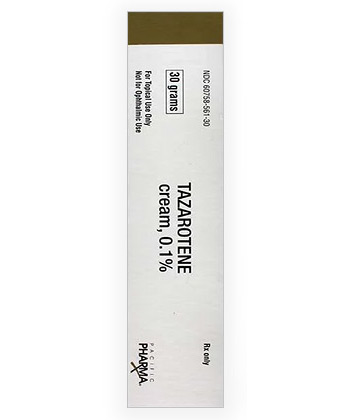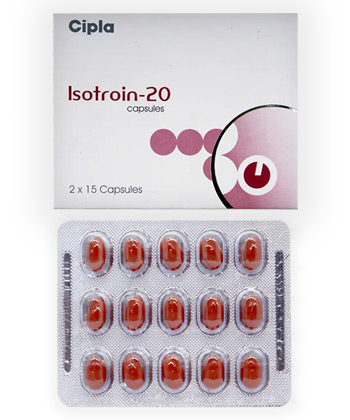Retin-A Cream
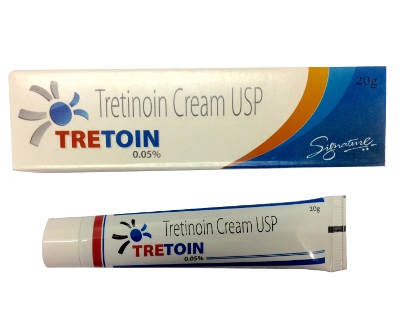
Retin-A Cream
- In our pharmacy, you can buy Retin-A Cream without a prescription, with delivery in 5–14 days worldwide. Discreet and anonymous packaging.
- Retin-A Cream is used to treat acne vulgaris and photoaging. It works by increasing skin cell turnover and preventing comedone formation.
- The usual dose is a thin layer of 0.025% to 0.1% cream applied once daily.
- The form of administration is topical cream.
- Initial improvement may be visible in 2–3 weeks.
- Full effects develop over 6–12 weeks with continued daily use.
- Avoid alcohol-based skin products and limit alcohol consumption, as they may worsen skin dryness and irritation.
- The most common side effects are skin irritation, redness, peeling, dryness, and increased sun sensitivity.
- Would you like to try Retin-A Cream without a prescription?
Basic Retin-A Cream Information
| Category | Details |
|---|---|
| INN (International Nonproprietary Name) | Tretinoin (all-trans-retinoic acid) |
| Australian Brand Names | Stieva-A®, Retrieve® |
| ATC Code | D10AD01 (Anti-acne topical retinoid) |
| Available Forms |
|
| Common Strengths | 0.025%, 0.05%, 0.1% |
| Manufacturers | Galderma (Stieva-A), Stiefel (Retrieve) |
| TGA Registration Status | Registered prescription medicine |
| Classification | Prescription-only (Rx) |
Retin-A Cream contains the active ingredient tretinoin, classified by Australia's Therapeutic Goods Administration as a topical retinoid exclusively available by prescription. In Australia, you'll primarily find this acne treatment sold as Stieva-A Cream® and Retrieve Cream®. These formulations come in standard concentrations ranging from 0.025% for sensitive skin to stronger 0.1% preparations for resistant acne. Pharmacies stock them in practical 30g tubes designed for home storage. Its classification echoes global standards where retinoids require professional oversight due to potential skin reactions.
How Retin-A Works: Mechanism Of Action
In Simple Terms
Retin-A Cream accelerates your skin's natural renewal cycle, helping to unblock pores and prevent comedones that develop into acne lesions. By promoting faster turnover of surface cells, it prevents dead cells from clogging hair follicles where bacteria proliferate. Think of it as gently encouraging sluggish skin to behave more like youthful, efficient skin.
Clinical Pharmacology
Tretinoin operates by binding to retinoic acid receptors (RARs) in skin cells, influencing gene expression patterns to normalize keratinization. This retinoid gets metabolized locally in skin tissues, with research showing negligible systemic absorption when correctly applied. The onset period averages 2-3 weeks as cellular changes accumulate, with maximum effects appearing after several months of consistent application.
Important Interaction Notes
Avoid combining Retin-A Cream with benzoyl peroxide (can cause skin irritation) or alcohol-based skincare products (increases dryness and peeling). Similarly, caution applies when using physical exfoliants that may compromise skin integrity during treatment periods.
Approved And Off-Label Uses In Australia
| Use Type | Conditions | Evidence Level |
|---|---|---|
| TGA-Approved | Acne vulgaris | Registered indication |
| Common Off-Label Uses | Photoaging (wrinkles/texture) | 2023 Journal of Dermatology study showed 40% wrinkle improvement |
| Hyperpigmentation/melasma | Supporting studies demonstrate pigment regulation |
Important Contraindications
Retin-A Cream is contraindicated during pregnancy (TGA Category D) due to demonstrated teratogenic potential and should be avoided with active eczema where medications may exacerbate inflammation. Caution applies when introducing tretinoin treatments to children under 12 years as efficacy and safety for pediatric acne carries limitations. For seniors managing photoaging concerns, initiating therapy using lower concentrations (0.025%) minimizes irritation risks that increase with age.
Dosage Guidelines And Adjustments
| Condition | Standard Protocol | Frequency |
|---|---|---|
| Acne Vulgaris | Apply 0.025% formulation | Nightly application |
| Photoaging/Pigmentation | Either 0.025% or 0.05% cream | 3-4 nights weekly |
Situational Adjustments
- Sensitive skin: Apply every second night initially; buffer by applying moisturizer first
- Liver/kidney impairment: No specific topical dosage adjustments required
- Missed dose: Skip forgotten application; don't apply double amount
Storage And Long-Term Use
Maintain Retin-A Cream below 25°C in original packaging, avoiding humid bathrooms where temperature fluctuates. The recommended acne treatment duration extends to 12 weeks initially before evaluating results, with longer periods (up to 6 months) often needed when managing photoaging concerns.
Safety Profile & Side Effects
Understanding potential reactions helps users manage expectations. Most common effects include initial redness and peeling as skin adjusts. Dryness and mild stinging frequently occur during the first month. Severe reactions like blistering or severe swelling require immediate discontinuation.
Sun sensitivity drastically increases with tretinoin use - daily broad-spectrum SPF50+ sunscreen becomes non-negotiable, even on cloudy days.
Key precautions
- Avoid during pregnancy or breastfeeding due to teratogenic risks
- Discontinue with active sunburn or eczema flare-ups
- Separate application from photosensitizing medications like doxycycline by 2-3 hours
- Never use with benzoyl peroxide unless formulated for combination use
Real Patient Experiences
Community discussions reveal consistent patterns among Australian users. Approximately 7 in 10 report temporary "purging" - increased breakouts peaking around week 3 as skin cell turnover accelerates. Long-term users (>6 months) regularly describe visible wrinkle reduction and faded sunspots.
Adherence strategies that work
"Buffer method" application over moisturiser reduces irritation • Starting slowly (twice weekly) builds tolerance • Hyaluronic acid serums counteract dryness • Avoiding exfoliants prevents compounding irritation
Negative experiences commonly involve inadequate sun protection leading to hyperpigmentation, or irritation exacerbated by Australia's arid climate. Those in low-humidity regions like South Australia often require richer moisturisers.
Alternatives Comparison (Australia Focus)
When Retin-A isn't suitable, alternatives serve different needs:
| Product | Strength | OTC Status | Best For | Price Range (AUD) |
|---|---|---|---|---|
| Adapalene 0.1% (Differin®) | Mild | OTC | Sensitive skin, teens | $25-35 (30g) |
| Tazarotene 0.1% (Tazorac®) | Strong | Rx only | Psoriasis, stubborn acne | $50-70 (30g) |
| Isotretinoin capsules (Oratane®) | Systemic | Rx only | Severe cystic acne | $50-120/month |
Antibiotic combinations like Stieva-A Plus (tretinoin + clindamycin) target inflammatory acne but require prescription. Differin remains popular for self-management under pharmacist guidance.
Australian Market Dynamics
Accessibility continues evolving across pharmacies:
- Major retailers: Chemist Warehouse stocks generics consistently; TerryWhite Chemmart often carries brand-name Retin-A
- Pricing patterns: $28-45 AUD for 30g generic tubes; brand variants cost 30% more
- Packaging innovations: Airless pump containers (e.g. in ReTrieve brand) prevent oxidation compared to traditional tubes
Seasonal demand spikes occur during summer months as UV exposure triggers acne flare-ups. Winter sees increased purchases for anti-ageing regimens. Recent Therapeutic Goods Administration approvals have expanded generic options by 40% since 2021, improving affordability.
Regional disparities exist - rural pharmacies typically maintain smaller stocks, though major chains offer nationwide delivery. Prescription requirements remain strictly enforced despite online petitions for OTC status.
Research and Future Trends
Recent clinical studies highlight exciting developments in tretinoin applications. A 2024 meta-analysis confirmed significant anti-aging benefits, showing 40% wrinkle reduction after consistent use. With major patents expired, affordable generics now dominate global markets, increasing accessibility. Research explores emerging uses including:
- Melasma treatment - Currently in Phase III trials
- Acne scar remodeling - Enhanced protocols under investigation
- Combination therapies - With non-ablative lasers for photoaging
Ongoing tretinoin research focuses on optimising formulations for reduced irritation while maintaining efficacy. Delivery systems like microencapsulation may revolutionise future retinoid options.
Studies tracking retinoid patents show novel derivatives entering preclinical testing, suggesting expanded therapeutic applications beyond dermatology within this decade. Researchers emphasise that evidence-based protocols must accompany these innovations.
Special Populations and Skin Types
Tretinoin requires tailored approaches for different skin needs and environments. Here's how Australians can adapt treatment:
Climate considerations: In Australia's high-UV environment, daily SPF 50+ sunscreen is non-negotiable. Apply every 2 hours during daylight exposure season.
| Skin Type | Recommended Approach |
|---|---|
| Sensitive skin | Use emulsion formulations; apply after moisturiser (buffering); frequency: alternate nights |
| Acne-prone skin | Avoid comedogenic products; select oil-free moisturisers; monitor for purging phase |
| Mature skin | Begin with 0.025% concentration; prioritise hydration; monitor barrier function |
Those with rosacea or eczema require medical supervision before starting retinoids. Adjust routines seasonally - consider reduced frequency during summer months.
Skincare Interactions Guide
Combining tretinoin incorrectly with other actives causes inflammation. Follow these interaction guidelines:
| Safe Combinations | Potentially Problematic |
|---|---|
| Niacinamide (reduces irritation) | Vitamin C (ascorbic acid causes instability) |
| Hyaluronic acid (hydration) | AHAs/BHAs (glycolic/salicylic acid increase sensitivity) |
| Ceramide moisturisers (barrier repair) | Benzoyl peroxide (deactivates tretinoin) |
Layering sequence matters:
1. Cleanse gently
2. Apply hydrating serum (if using)
3. Moisturiser (for sensitive skin)
4. Pea-sized Retin-A
5. Final moisturiser layer (sandwich method)
Allow 20 minutes between steps when combining actives. Never apply tretinoin to damp skin.
Evidence-Based FAQs
Can tretinoin be used during breastfeeding?
No. The TGA categorises topical retinoids as Category D due to potential infant exposure risk. Discontinue use during pregnancy and lactation.
How long until wrinkle reduction appears?
Clinical studies confirm visible collage rebuilding starts at 12 weeks. Maximum benefits occur after 6-12 months of consistent use. Take monthly photos to track progress.
Is $30 AUD reasonable for generic tretinoin?
Yes. Most Australian pharmacies price 30g tubes between $27-$35 AUD. Avoid suspiciously cheap online offers lacking TGA approval.
What if irritation persists beyond 4 weeks?
Reduce application frequency to twice weekly temporarily. Switch to emulsion formulas if using gels. Persistent erythema or peeling warrants medical review. Always pair treatment with barrier-supporting moisturisers.
Guidelines for Proper Use
Correct application prevents complications:
- Cleanse face with mild, non-abrasive product
- Wait until skin is completely dry (20 minutes post-cleanse)
- Dispense pea-sized portion - sufficient for full face coverage
- Dot on forehead, cheeks, chin before gentle spreading
- Avoid eye contours, nostrils, and mouth corners
Critical precautions:
- Never apply before sun exposure or chemical peels
- Discontinue waxing during treatment
- Check separator - discard if cream discolours or separates
- Store below 25°C (bathroom cabinets often too humid)
Common mistakes include using multiple actives concurrently, skipping sunscreen application, and impatience with results. Severe irritation indicates medical assessment needed. Always review official product leaflet details.

